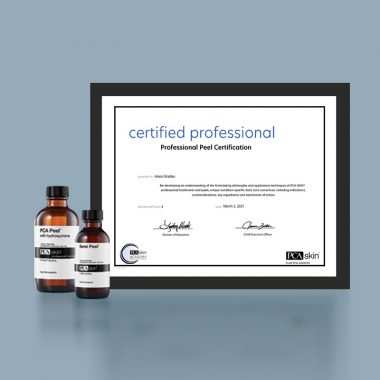Nordlund JJ, Grimes PE, Ortonne JP. (2006) “The Safety of Hydroquinone.” JEADV, volume 20: pp. 781-787
Maeda K, Fukuda M. (1996) “Arbutin: Mechanism of its Depigmenting Action in Human Melanocyte Culture.” Journal of Pharmacology and Experimental Therapeutics, volume 276: pp. 765-769
Nazarro-Porro, M. (1987) “Azelaic Acid.” J Am Acad Dermatol, volume 17: pp. 1033-1041
Yokota T, Nishio H, Kubota Y, et al. (1998) “The Inhibitory Effects of Glabridin from Licorice Extracts on Melanogenesis and Inflammation.” Pigment Cell Research, volume 11: pp. 356-361
Kahn, V. (1995) “Effect of Kojic Acid on the Oxidation of DL-DOPA, Norepinephrine, and Dopamine by Mushroom Tyrosinase.” Pigment Cell Research, volume 8: pp. 234-240
Lotti T, Theirs, BH, et al. Dermatologic Clinics: Pigmentary Disorders, Philadelphia: Elsevier Saunders, 2007
Draelos ZD. Cosmetic Formulation of Skin Care Products, New York: Taylor and Francis Group LLC, 2006
Badreshia-Bansal S, Draelos ZD. “Insight into Skin Lightening Cosmeceuticals for Women of Color.” Journal of Drugs in Dermatology, volume 6: pp. 32-39
James AJ. (2006) “Skin Lightening and Depigmenting Agents.” emedicine from WebMD: http://www.emedicine.com/derm/topic528.htm (July 2008)
Rendon, MI, Gaviria JI. (2005) “Review of Skin Lightening Agents.” Dermatologic Surgery, volume 31: pp. 886–890
Vallero-Rowell VM, Verallo V, et al. (1989) “Double-Blind Comparison of Azelaic Acid and Hydroquinone in the Treatment of Melasma.” Acta Dermato-Venereologica Suppl, volume 143: pp. 58-61
Fitton A, Goa KL. (1991) “Azelaic Acid: A Review of its Pharmacological Properties and Theraputic Efficacy in Acne and Hyperpigmentary Disorders.” Drugs, volume 4: pp. 780-798

